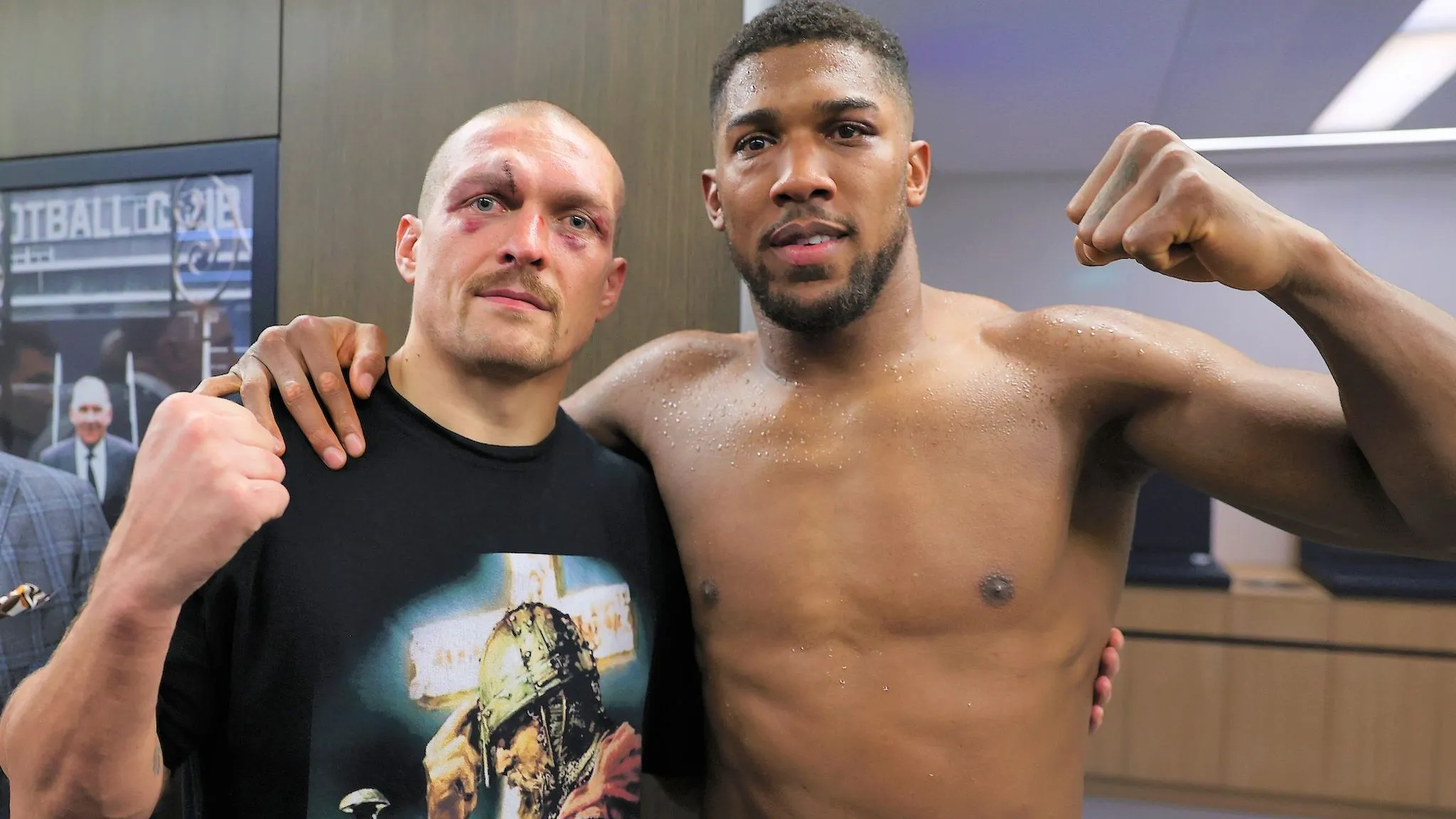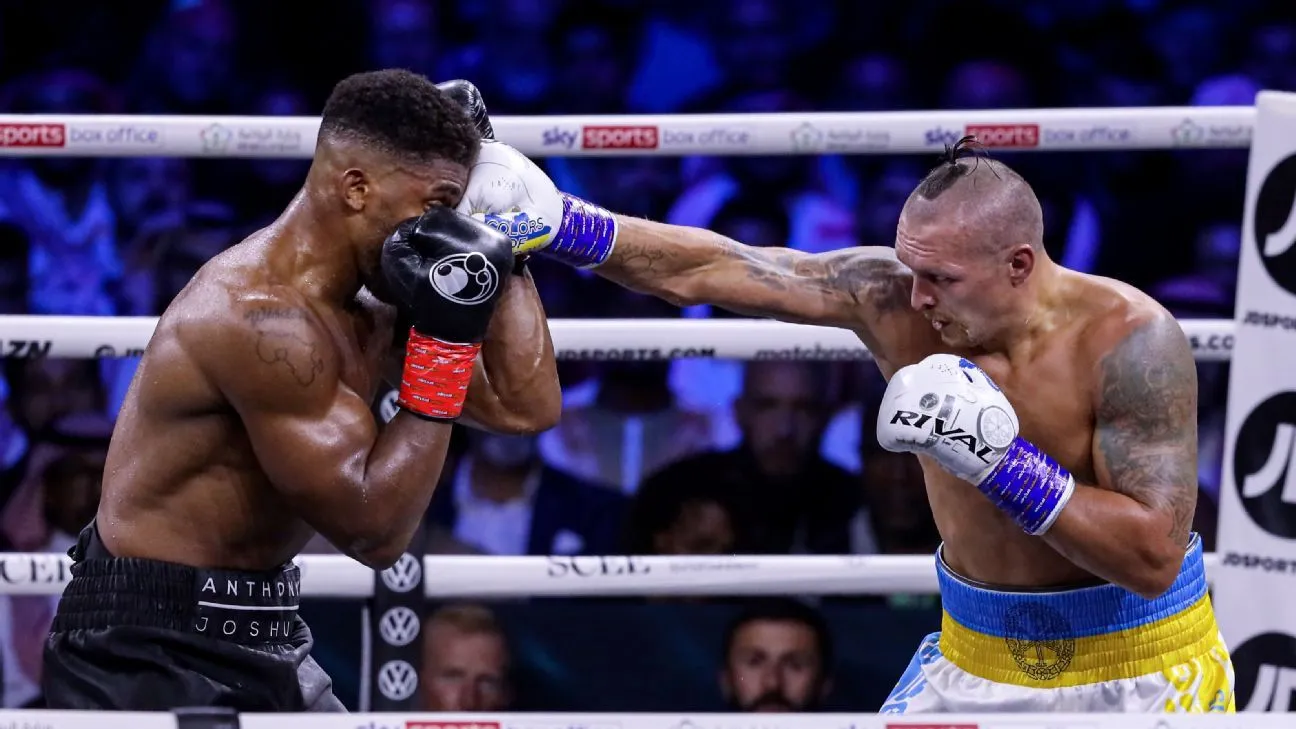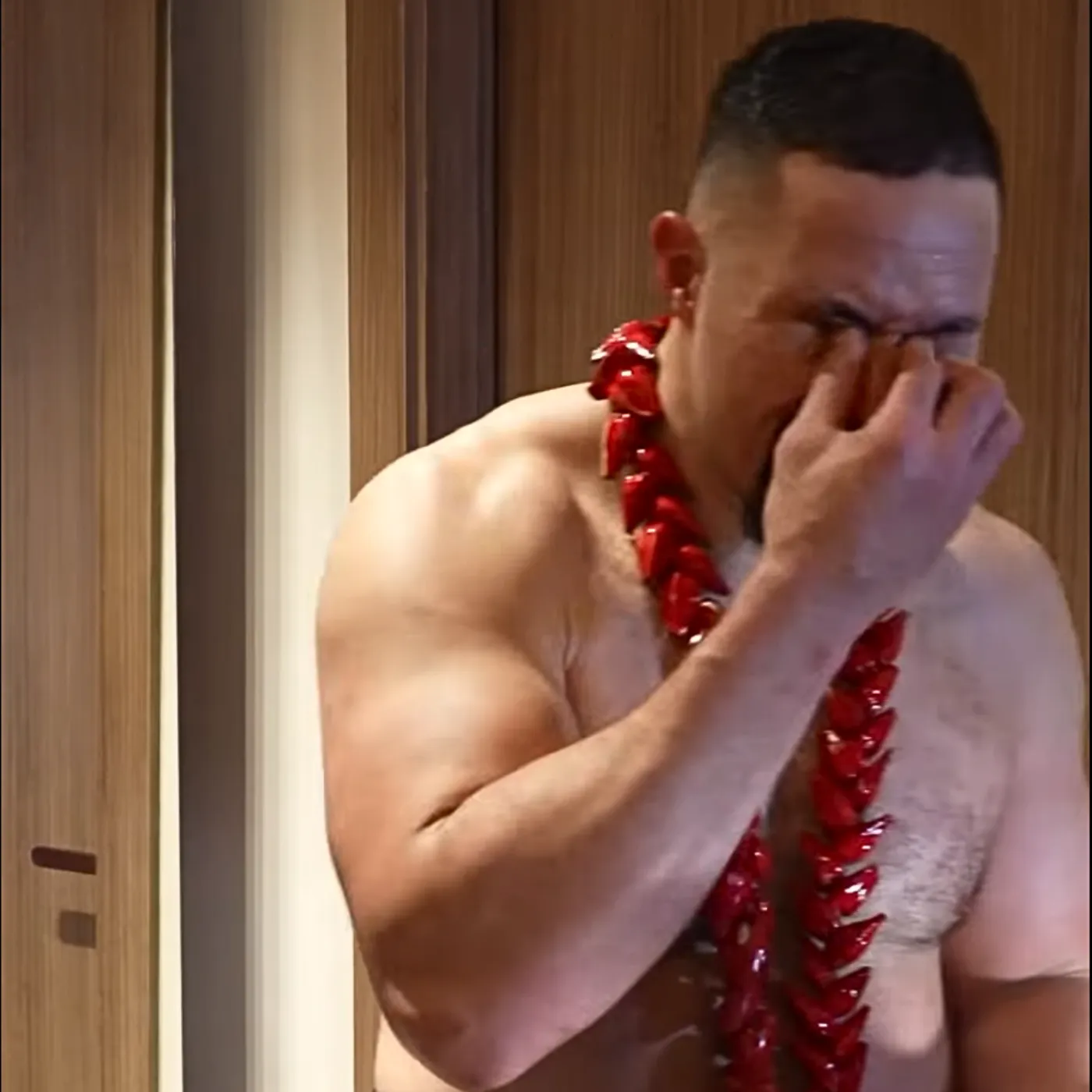

Oleksandr Usyk exposed Anthony Joshua’s fatal flaw in the Ring
Anthony Joshua, once considered an unstoppable force in heavyweight boxing, has faced setbacks that have raised serious questions about his technique. Despite his impressive record and multiple world titles, his losses—particularly against Oleksandr Usyk—have exposed a fundamental weakness that could define the remainder of his career.
Usyk, the skilled Ukrainian southpaw who has twice bested Joshua, recently pointed out what he believes is the Englishman’s most dangerous flaw: his habit of leaning backward to evade punches. According to Usyk, this defensive technique leaves Joshua vulnerable, disrupting his balance and opening him up to devastating counterattacks.
So, how has this flaw impacted Joshua’s career? Can he fix it, or is it too late? Let’s dive deep into the technical, tactical, and psychological implications of this critical weakness.
The Rise of Anthony Joshua: From Olympic Gold to Heavyweight Champion
Anthony Joshua’s journey to the top of professional boxing has been nothing short of remarkable. Born in Watford, England, in 1989, he transitioned from amateur to professional with unprecedented speed. His gold medal at the 2012 Olympics marked the beginning of his rise, and by 2016, he was a world champion, holding the IBF title.
Joshua’s success was built on a combination of:
✔ Raw power – His knockout ratio was among the highest in the division.
✔ Athleticism – Despite his size, he moved fluidly in the ring.
✔ Strong fundamentals – A well-schooled jab and textbook right cross.
However, as his career progressed and the level of competition increased, cracks began to show—most notably, in his ability to handle fast, technical fighters who exposed his defensive vulnerabilities.

Usyk’s Expert Analysis: Joshua’s Dangerous Defensive Habit
Oleksandr Usyk, speaking to Boxing King Media, gave his candid assessment of Joshua’s biggest flaw:
“Before the fight, I thought Joshua would win, but boxing is unpredictable. Joshua has a problem: he leans back when avoiding punches. That’s dangerous. If you want to evade a shot by pulling back, you need to move your back foot, not just lean away. We saw how costly this habit can be.”
Let’s break this down from a technical perspective.
Why Leaning Back Is a Problem in Boxing
1️⃣ Loss of Balance – When a fighter leans back without proper foot movement, their weight shifts too far behind their center of gravity. This makes them easy to knock off balance and unable to counterpunch effectively.
2️⃣ Increased Exposure to Follow-Up Shots – A skilled opponent can recognize this habit and adjust by feinting or throwing looping shots that connect when the defender is off-balance.
3️⃣ Reduced Mobility – Instead of being in a position to pivot or sidestep, a fighter who leans back is momentarily frozen, giving the opponent a chance to close the distance.
This is exactly what Usyk capitalized on during both of their fights.
How Usyk Used Joshua’s Weakness to His Advantage
In their first bout in September 2021, Usyk’s game plan was masterful. He consistently forced Joshua onto the back foot, pressuring him with feints and quick combinations. Whenever Joshua tried to avoid punches by leaning back, Usyk stepped in aggressively, throwing hooks and straight lefts that found their mark.
By the later rounds, Joshua’s hesitation and defensive errors allowed Usyk to dominate, nearly stopping him in the final moments of the fight. The judges awarded Usyk a well-earned unanimous decision victory.
The Rematch: Did Joshua Fix His Mistakes?
After his loss, Joshua brought in new trainer Robert Garcia to refine his approach. The goal was clear:
✔ Improve footwork to avoid being outmaneuvered.
✔ Enhance head movement instead of relying on leaning back.
✔ Increase aggression to put Usyk on the defensive.
While Joshua performed better in their August 2022 rematch, the same defensive habit persisted. Usyk once again exploited his leaning motion, baiting him into uncomfortable positions. Even though Joshua fought with more urgency, he still struggled to adapt when Usyk applied pressure.
The result? Another unanimous decision loss, proving that this flaw remains a major issue.
What This Means for Joshua’s Future
At 34 years old, Joshua is at a crossroads. He still possesses elite physical attributes, but his defensive issues must be addressed if he hopes to reclaim a world title.
How Can He Overcome This Weakness?
Refining His Defensive Techniques
Instead of leaning backward, Joshua should:
- Use lateral movement to create angles.
- Step back with his rear foot instead of just bending at the waist.
- Keep a tighter guard to avoid exposing his chin.
Improving Ring IQ
A major difference between Usyk and Joshua is fight intelligence. Usyk is a master at setting traps, feinting, and adjusting mid-fight. Joshua needs to develop a better sense of anticipation, reading his opponent’s moves rather than reacting too late.
Adopting a More Versatile Fighting Style
Some of the best heavyweights in history—Lennox Lewis, Wladimir Klitschko, and Tyson Fury—have reinvented themselves mid-career. If Joshua hopes to remain a top contender, he must expand his tactical approach and become more adaptable.
Lessons for Other Fighters: Why This Applies Beyond Joshua
Joshua’s struggles aren’t just his alone—they serve as a lesson for any boxer looking to reach the top.
🔹 Defense Wins Championships – Many of the greatest boxers of all time, from Floyd Mayweather to Pernell Whitaker, built their legacies on strong defensive fundamentals. Even heavyweights like Muhammad Ali and Tyson Fury have thrived due to their ability to avoid damage.
🔹 Every Weakness Will Be Exploited – At the highest level, no flaw goes unnoticed. If an opponent can predict your movements, they’ll find a way to capitalize on them.
🔹 Adapt or Decline – Boxing is a constantly evolving sport. Fighters who fail to adjust—whether due to stubbornness or declining athleticism—eventually get left behind.

What’s Next for Anthony Joshua?
Despite his losses, Joshua is still a major player in the heavyweight division. He has multiple paths forward:
- Fight Deontay Wilder – A high-stakes showdown with Wilder would test whether Joshua’s improvements can hold up against an even bigger power puncher.
- Challenge Tyson Fury – A long-awaited British super-fight could finally happen if Fury doesn’t face Usyk first.
- Pursue a Trilogy with Usyk – If Joshua can put together some convincing wins, a third fight with Usyk might be an option.
No matter what happens, one thing is certain: If Joshua doesn’t fix this flaw, his days as a dominant heavyweight may be numbered.
Final Thoughts: Can Joshua Reclaim His Throne?
Anthony Joshua is one of the most physically gifted heavyweights of his generation, but natural ability alone won’t be enough. His reliance on leaning backward when evading punches has cost him dearly, and as Usyk pointed out, it’s a habit that must be corrected.
Can Joshua make the necessary adjustments and return to championship form? Or will this fatal flaw continue to haunt him in future fights?
Only time will tell. But one thing is for sure—the heavyweight division is as exciting as ever, and Joshua’s next move will be crucial in defining his legacy.


















